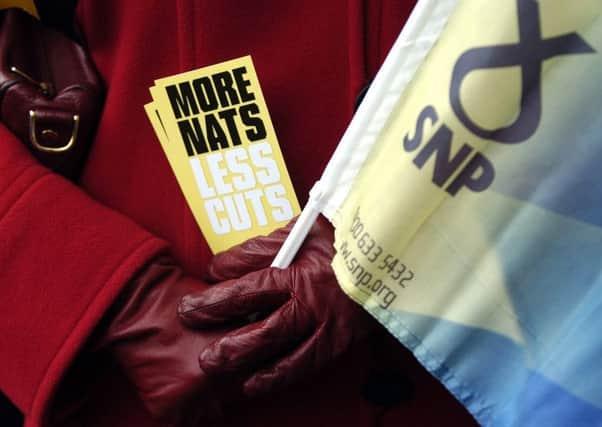Not all members of the SNP's swelling ranks are out knocking doors


The Labour club in Camelon, a suburb on the western edge of Falkirk, was home to one of the largest and best-organised party branches in Scotland. Back in the 1980s it was the hive of operations for numerous Westminister, district and regional council campaigns.
All local constituencies and the majority of municipal wards were firmly under Labour control. It was from places such as this the party’s post-war domination of electoral politics in Scotland was established.
Advertisement
Hide AdAdvertisement
Hide AdWhile the club survives - and Falkirk’s Labour branch still has the ability to generate headlines - it now pales in comparison to the SNP’s organisation. It is the Nationalists who are today the largest party on the local authority as well as holding all Westminster and Holyrood seats in the town.
Falkirk had several strong SNP branches years before it broke through in other urban areas, but the rise in members in the wake of the 2014 independence referendum still caught some party veterans by surprise. Instead of relying upon three activists to stuff leaflets through letterboxes, suddenly there were 30.
This scenario was repeated across the country. Party membership at a national level stood at around 25,000 on September 14, 2014. Six months later that figure had quadrupled.
Swelling ranks
Figures released last week by the House of Commons library show the SNP is on course to overtake the Conservatives as the UK’s second biggest party in terms of membership. The Nationalists had around 118,200 registered members as of January this year, with the Tories claiming 124,000 - although some in Theresa May’s party suggest the real figure could be nearer 80,000.
But with no prospect of an IndyRef2 on the immediate agenda, what motivates the class of 2014?
The Scotsman spoke with several current and former members who joined the party either shortly before or after the 2014 referendum. Some are still content to pay their dues and little more, while others have progressed to become local organisers.
One, who asked not to be named, joined in September that year and has retained their membership ever since - despite not attending a single branch meeting or party conference.
“It’s about making a statement,” they said. “I don’t agree with everything the party does, but I remain committed to the idea of independence.”
Departure
Advertisement
Hide AdAdvertisement
Hide AdRobert Cowie was among the thousands who signed up in autumn 2014. “Getting so close meant the referendum defeat was hard to take,” he told The Scotsman. “I assumed we might move to a more federal UK. That quickly proved not to be the case, and since then, I’ve thought independence is the only way we’ll get a government that represents what Scotland wants.”
Despite his support for independence, the 33-year-old has since resigned his party membership. “I might have considered campaigning for a second referendum but I wouldn’t have been motivated to campaign for the day to day policies,” he added.
“I was frustrated the party didn’t look to address the issues that stopped people in the middle voting Yes in 2014 - fears over pensions, EU membership, and job losses or relocations.
“Those are the issues that stopped people voting Yes so those are the issues they should be creating a long term vision of in an independent Scotland.”
Party membership, of course, does not automatically translate into votes. Despite the Conservatives’ shrinking membership, the party still won a Westminster majority in 2015 and retained power two years later.
But boots on the ground remain a vital tool in fighting elections - and the SNP has plenty of those.